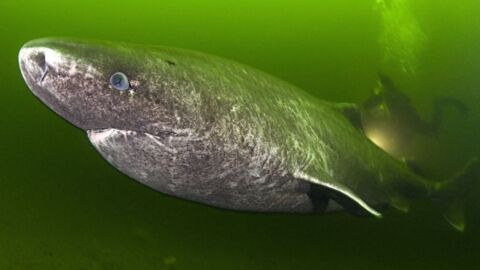Of the several hundred species of sharks found around the world, the goblin shark is undoubtedly one of the most unusual.
Discover our latest podcast
The goblin shark—whose scientific name is Mitsukurina owstoni—is found in all three major oceans (Atlantic, Pacific and Indian) and has a rather unusual profile. Underneath its long, flattened, pointed snout and small, dark eyes is a jaw filled with sharp teeth that can 'project' forward to catch preys.
A shark that inspired Alien
For the record, this amazing feature went so far as to inspire a famous blockbuster, Alien: Covenant, released in theatres in 2017. In an interview with Empire magazine, John Logan, one of the film's screenwriters, confided that the Neomorph, a space creature invented for this feature film, took on certain features of the shark, particularly its jaw.
But let's get back to our shark. According to the (rare) observations that have been made (its habitat is in the open sea, between 100 and 1,300 metres deep depending on the region), the goblin shark can measure up to four metres in length when fully grown, and weigh around 200 kilos.
It has small needle-like teeth, perfect for catching its prey once it has thrown its jaw forward to surprise them, as you can see in this video.
A very effective 'jaw throw'
These images, the first to immortalise the infamous 'jaw throw' led to a study published in 2016 in the journal Scientific Reports. From the analysis of these attacks, the researchers concluded that the shark can throw its jaws at a speed of 3 metres per second, extending up to 9.4% of its body length.
According to the researchers, this mode of attack is the result of an adaptation to the depths of the ocean where the shark lives, and where preys are scarce. This particularity allows it to attack small crustaceans as well as larger fish. A handy feature, considering that this shark is quite slow.
And although it is particularly interesting to study, the goblin shark, which is not considered dangerous for humans, loves to play hard to get. It is very rarely caught or observed, and many questions about its lifestyle remain unanswered to this day. In the absence of sufficient data on its populations, it is classified as being of minor concern by the International Union for Conservation of Nature (IUCN).















